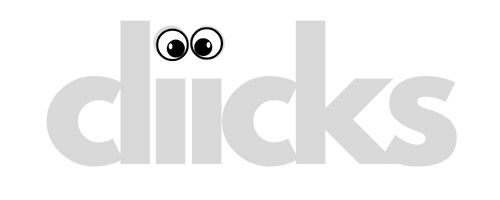Acoustic Insulation and Barriers Reducing Noise Pollution in Industrial Settings
As Per Market Research Future, acoustic insulation and barriers are critical components of the Industrial Noise Control Market, playing a vital role in reducing noise levels in industrial settings. These materials are designed to absorb sound and prevent its transmission, creating a quieter work environment. The rising awareness of the health impacts of noise pollution is driving demand for effective acoustic solutions. As industries seek to enhance productivity and employee comfort, the market for acoustic insulation and barriers is expected to grow significantly.
Industrial noise control has become a crucial aspect of workplace safety and operational efficiency across multiple industries. Industrial facilities, including manufacturing plants, construction sites, and energy production units, generate significant noise that can affect worker health, productivity, and compliance with regulatory standards. Industrial noise control solutions encompass a range of technologies such as acoustic panels, soundproof enclosures, silencers, vibration dampeners, and noise monitoring systems. These solutions not only ensure compliance with environmental and safety regulations but also enhance operational efficiency and employee well-being.
Drivers of Market Growth
The industrial noise control market is primarily driven by increased awareness about occupational health hazards and stringent government regulations regarding noise pollution. Organizations are investing in noise control systems to protect workers from hearing loss, fatigue, and stress-related issues. In addition, industries are recognizing the financial benefits of noise reduction, including improved employee productivity and reduced equipment wear and tear. Growing urbanization and industrial expansion in developing economies are also boosting the adoption of noise control solutions. Moreover, advancements in materials and acoustic engineering are enabling the development of cost-effective and highly efficient noise control products.
Types of Noise Control Solutions
Industrial noise control solutions can be categorized into several types. Active noise control systems employ sound wave technology to counteract unwanted noise, while passive solutions such as barriers, enclosures, and insulation materials absorb and reduce noise propagation. Vibration control solutions, including isolators and dampeners, prevent noise generated by machinery vibrations from spreading through structures. Additionally, monitoring and analysis tools allow industries to identify noise hotspots and implement targeted control measures. The integration of IoT and smart sensors in noise control systems is also enhancing predictive maintenance and real-time monitoring capabilities.
Industry Applications
The demand for industrial noise control solutions spans various industries. Manufacturing facilities use noise control measures to reduce machinery noise, ensuring compliance with workplace safety regulations. Energy and power plants implement solutions to mitigate turbine and generator noise, while construction sites adopt sound barriers and silencers to minimize environmental noise impact. The automotive and aerospace sectors rely on acoustic enclosures and vibration control technologies to maintain equipment efficiency and operator comfort. Even healthcare and pharmaceutical industries employ noise control solutions in laboratories and production facilities to ensure precision and maintain quiet environments.
Regional Insights
Regionally, North America and Europe are mature markets for industrial noise control due to strict occupational safety standards and high awareness levels. These regions have witnessed widespread adoption of both active and passive noise control technologies. Asia-Pacific, led by countries like China and India, is emerging as a significant market, driven by rapid industrialization, urbanization, and increasing awareness of workplace safety standards. Latin America and the Middle East are gradually adopting noise control measures in line with industrial expansion and regulatory developments, while the global market is witnessing technological convergence and cross-border collaborations.
Competitive Landscape
The industrial noise control market is moderately competitive, with several key players focusing on innovation, product diversification, and geographic expansion. Companies are developing advanced acoustic materials, noise barriers, and vibration control systems tailored to specific industrial requirements. Strategic partnerships, mergers, and acquisitions are common as organizations aim to strengthen their product portfolios and distribution networks. Furthermore, manufacturers are increasingly focusing on sustainability by offering eco-friendly noise control solutions and reducing energy consumption during production processes.
Future Outlook
The future of the industrial noise control market is promising, supported by ongoing technological innovations and growing awareness of occupational safety. Advancements in smart noise monitoring systems, IoT integration, and active noise cancellation technologies are expected to revolutionize the market. Additionally, expanding industrialization in emerging economies and stricter regulatory frameworks will continue to drive demand for efficient noise control solutions. As industries prioritize worker health, operational efficiency, and environmental compliance, the market is likely to witness sustained growth in the coming years.
FAQs – Industrial Noise Control Market
Q1: Why is industrial noise control important?
A1: Industrial noise control is important to protect worker health, ensure compliance with regulations, and enhance productivity and operational efficiency.
Q2: What are the common types of industrial noise control solutions?
A2: Solutions include active and passive noise control systems, vibration dampeners, acoustic panels, soundproof enclosures, and noise monitoring tools.
Q3: Which region is emerging as a key market for industrial noise control?
A3: Asia-Pacific is emerging as a key market due to rapid industrialization and increasing awareness of workplace safety.
More Related Reports:


- Art
- Causes
- Crafts
- Dance
- Drinks
- Film
- Fitness
- Food
- Spiele
- Gardening
- Health
- Startseite
- Literature
- Music
- Networking
- Andere
- Party
- Religion
- Shopping
- Sports
- Theater
- Wellness



